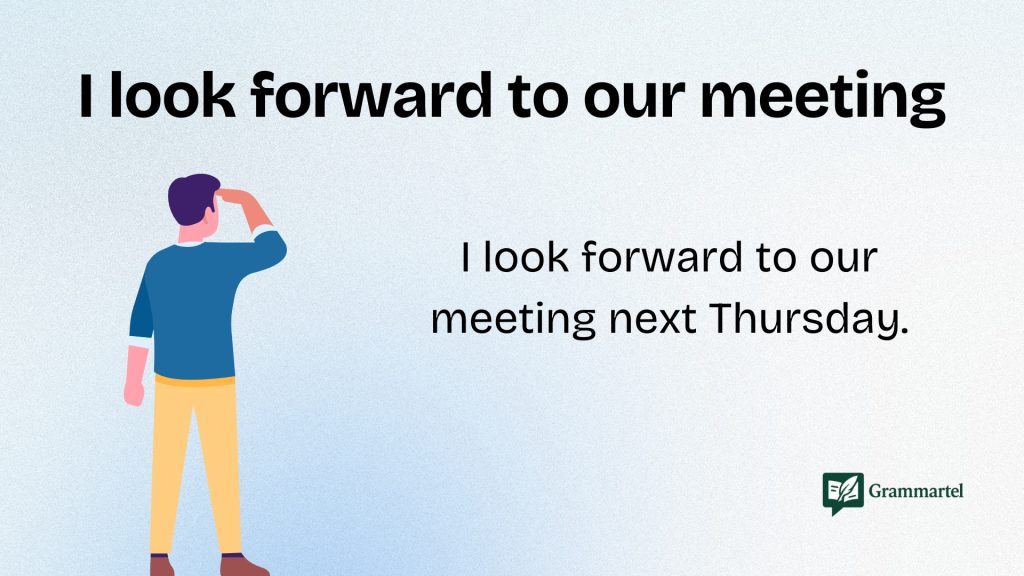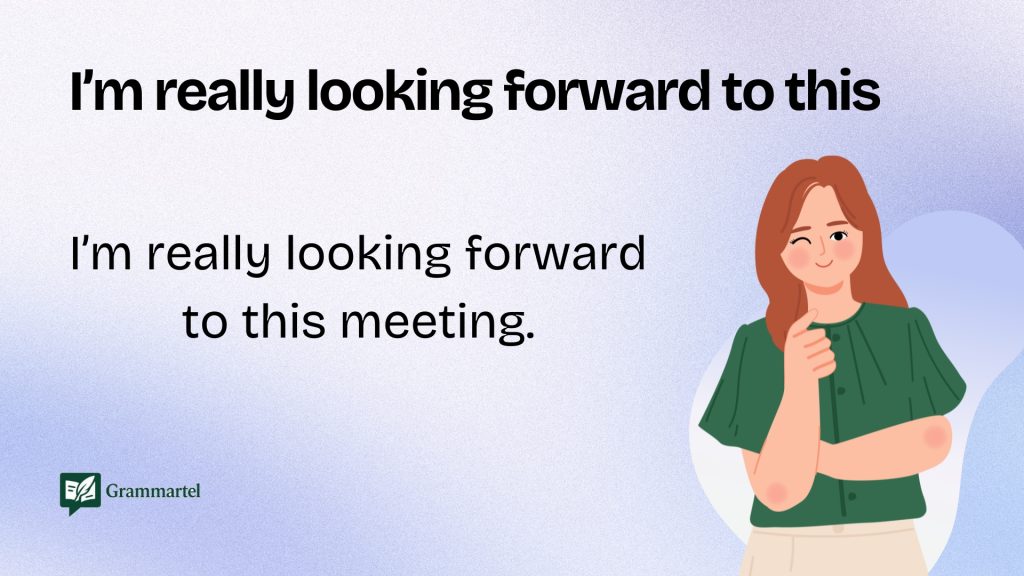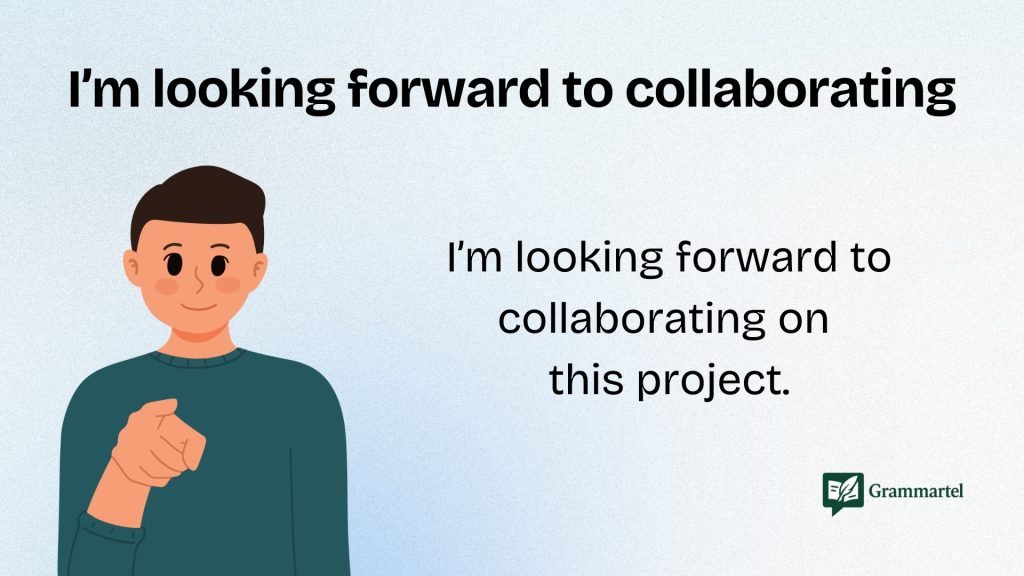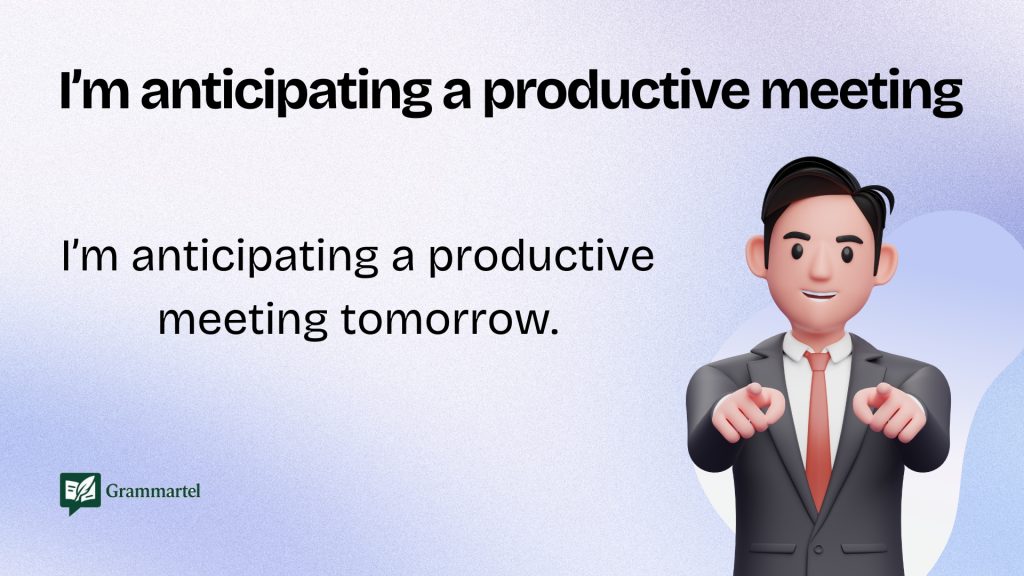Sometimes, saying “Looking forward to meeting you” feels a bit overused. While it’s a polite and friendly phrase, there are plenty of other ways to express the same excitement. Whether you’re writing a work email, sending a note to a new client, or arranging a casual meetup, a fresh phrase can make your message stand out. In this guide, we’ll explore 40 polite alternatives you can use, along with examples. These options work for formal and informal situations, so you can choose the one that best matches your tone and the occasion.
What Does “Looking Forward to Meeting You” Mean?
“Looking forward to meeting you” means you feel happy or excited about meeting someone soon. It shows a positive attitude and sets a friendly tone.
When to Use “Looking Forward to Meeting You”
You can use it in emails, texts, or conversations when you expect to meet a person for the first time or again. For example, before a job interview, a client meeting, or even a coffee catch-up, this phrase works well.
It’s polite, professional, and warm at the same time. In formal situations, you might say, “I look forward to meeting you.” In casual settings, “Looking forward to meeting you” feels natural and friendly. Both versions show you value the meeting and the person.
40 Polite Ways to Say “Looking Forward to Meeting You”
1. I look forward to our meeting

Meaning: You’re eager for the planned meeting.
Explanation: A formal and respectful phrase often used in professional settings.
Example: “I look forward to our meeting next Thursday.”
Best Use: Business emails, formal invitations.
Worst Use: Casual chats with friends.
Tone: Professional, polite.
2. I’m excited to meet you
Meaning: You feel happy about meeting soon.
Explanation: Adds a personal touch while still being polite.
Example: “I’m excited to meet you at the workshop.”
Best Use: Friendly business or social events.
Worst Use: Very formal corporate emails.
Tone: Warm, enthusiastic.
3. Can’t wait to meet you
Meaning: You’re eager and enthusiastic.
Explanation: More casual and expressive than formal alternatives.
Example: “Can’t wait to meet you this weekend!”
Best Use: Informal settings, networking events.
Worst Use: Formal interviews or client letters.
Tone: Friendly, casual.
4. I’m looking forward to seeing you in person
Meaning: You’re eager to meet face-to-face.
Explanation: Emphasizes the physical meeting.
Example: “I’m looking forward to seeing you in person at the conference.”
Best Use: When meeting someone for the first time in person.
Worst Use: Casual texts.
Tone: Professional, warm.
5. I’m happy we’ll meet soon
Meaning: You feel pleased about the meeting.
Explanation: Adds warmth without sounding too formal.
Example: “I’m happy we’ll meet soon to discuss the project.”
Best Use: Business meetings, casual meetups.
Worst Use: Highly formal corporate writing.
Tone: Friendly, polite.
6. I’m eager to connect
Meaning: You’re enthusiastic about connecting.
Explanation: Works well in networking or business emails.
Example: “I’m eager to connect at the summit.”
Best Use: Networking events, industry conferences.
Worst Use: Personal or casual settings.
Tone: Professional, positive.
7. I’m looking forward to catching up
Meaning: You’re eager to talk and update each other.
Explanation: Best for someone you’ve met before.
Example: “I’m looking forward to catching up over lunch.”
Best Use: Friends, colleagues you know well.
Worst Use: First-time meetings.
Tone: Casual, friendly.
8. I’m glad we’ll meet soon
Meaning: You feel pleased about the meeting.
Explanation: Neutral, works in formal and informal contexts.
Example: “I’m glad we’ll meet soon to review the details.”
Best Use: Clients, team members.
Worst Use: Extremely formal legal or corporate language.
Tone: Warm, polite.
9. It’ll be great to meet you
Meaning: You expect the meeting to go well.
Explanation: Positive without being too formal.
Example: “It’ll be great to meet you at the expo.”
Best Use: Networking, casual professional settings.
Worst Use: Formal job applications.
Tone: Friendly, approachable.
Read Next : 40 Heartfelt Ways to Say “Happy to Help” (With Examples).
10. I’m pleased about our upcoming meeting
Meaning: You feel satisfied and ready for the meeting.
Explanation: Slightly formal but still approachable.
Example: “I’m pleased about our upcoming meeting next Tuesday.”
Best Use: Business meetings, professional communication.
Worst Use: Casual get-togethers.
Tone: Professional, polite.
11. I’m thrilled to finally meet you
Meaning: You feel very excited about the meeting.
Explanation: Shows strong enthusiasm and warmth.
Example: “I’m thrilled to finally meet you after all the emails!”
Best Use: Long-awaited meetings or collaborations.
Worst Use: Formal or reserved settings.
Tone: Cheerful, emotional.
12. I’m glad we’ll be connecting soon
Meaning: You’re happy to connect or meet shortly.
Explanation: A friendly, semi-formal expression.
Example: “I’m glad we’ll be connecting soon at the event.”
Best Use: Emails, casual work settings.
Worst Use: Legal documents, contracts.
Tone: Warm, informal.
13. I’m ready to meet and talk
Meaning: You’re prepared and open to conversation.
Explanation: A clear, honest statement of intent.
Example: “I’m ready to meet and talk about the project.”
Best Use: Business planning or team meetings.
Worst Use: Social invitations.
Tone: Direct, professional.
14. I’m really looking forward to this

Meaning: You’re genuinely excited about what’s coming.
Explanation: Adds personal excitement without being too casual.
Example: “I’m really looking forward to this meeting.”
Best Use: Team planning, partnerships.
Worst Use: Formal invitations.
Tone: Personal, positive.
15. It’ll be nice to meet face-to-face
Meaning: Meeting in person is a good thing.
Explanation: A casual way to appreciate in-person interaction.
Example: “It’ll be nice to meet face-to-face after working remotely.”
Best Use: Hybrid teams, remote clients.
Worst Use: Legal settings.
Tone: Friendly, relaxed.
16. I’m grateful we’re meeting
Meaning: You appreciate the chance to meet.
Explanation: Polite and thankful in tone.
Example: “I’m grateful we’re meeting to go over the proposal.”
Best Use: Thank-you emails, invitations.
Worst Use: Casual texts.
Tone: Respectful, sincere.
17. Looking forward to putting a face to the name
Meaning: You’re excited to meet someone you’ve only known through messages.
Explanation: Light and conversational, often used after emails or calls.
Example: “Looking forward to putting a face to the name on Monday.”
Best Use: First-time meetings after digital exchanges.
Worst Use: Formal letters.
Tone: Playful, casual.
18. I’m keen to meet you
Meaning: You are eager to meet.
Explanation: Shows strong interest without sounding too emotional.
Example: “I’m keen to meet you and discuss the ideas.”
Best Use: Interviews, planning calls.
Worst Use: Very casual friend chats.
Tone: Sharp, interested.
19. I welcome our meeting
Meaning: You accept and value the meeting.
Explanation: Slightly formal but gentle in tone.
Example: “I welcome our meeting on this important matter.”
Best Use: Academic, legal, or corporate communication.
Worst Use: Informal chats.
Tone: Formal, respectful.
20. I’m looking forward to hearing your ideas
Meaning: You’re excited about what the other person has to say.
Explanation: Shows anticipation for a thoughtful exchange.
Example: “I’m looking forward to hearing your ideas on the redesign.”
Best Use: Brainstorming, collaboration.
Worst Use: Routine updates.
Tone: Encouraging, interested.
21. I’m looking forward to working with you
Meaning: You’re excited about collaboration.
Explanation: Emphasizes a shared goal or project.
Example: “I’m looking forward to working with you on the new campaign.”
Best Use: Partnerships, team introductions.
Worst Use: Social events.
Tone: Professional, optimistic.
22. I’m eager to hear your thoughts
Meaning: You’re ready to listen and learn from them.
Explanation: Focuses on their input or perspective.
Example: “I’m eager to hear your thoughts during our meeting.”
Best Use: Brainstorming, consultations.
Worst Use: Personal catch-ups.
Tone: Curious, respectful.
23. I’m happy we’ll have a chance to talk
Meaning: You’re pleased about an upcoming conversation.
Explanation: Friendly but still suitable for professional use.
Example: “I’m happy we’ll have a chance to talk at the summit.”
Best Use: Networking, informal business.
Worst Use: Legal or official documents.
Tone: Warm, casual.
24. I’m looking forward to getting started
Meaning: You’re eager to begin working together.
Explanation: Works well for project kickoffs.
Example: “I’m looking forward to getting started next week.”
Best Use: Team introductions, project launches.
Worst Use: Casual meetups.
Tone: Professional, enthusiastic.
25. I’m anticipating a great discussion
Meaning: You expect a productive conversation.
Explanation: Formal but still positive.
Example: “I’m anticipating a great discussion about the proposal.”
Best Use: Meetings with clear agendas.
Worst Use: Casual events.
Tone: Formal, positive.
26. I’m looking forward to learning more from you
Meaning: You value their knowledge and insights.
Explanation: Shows respect for their expertise.
Example: “I’m looking forward to learning more from you during our meeting.”
Best Use: Mentorship, interviews, consultations.
Worst Use: Social plans.
Tone: Respectful, professional.
27. I’m ready to start our conversation
Meaning: You’re prepared to talk now or soon.
Explanation: Short and clear, good for immediate meetings.
Example: “I’m ready to start our conversation tomorrow morning.”
Best Use: Calls, scheduled discussions.
Worst Use: Casual greetings.
Tone: Direct, neutral.
28. I’m looking forward to collaborating

Meaning: You’re eager to work together.
Explanation: A concise, teamwork-focused phrase.
Example: “I’m looking forward to collaborating on this project.”
Best Use: Partnerships, teamwork.
Worst Use: Social gatherings.
Tone: Professional, friendly.
29. I’m looking forward to exchanging ideas
Meaning: You expect a creative or intellectual exchange.
Explanation: Highlights idea-sharing.
Example: “I’m looking forward to exchanging ideas at the workshop.”
Best Use: Brainstorming, creative teams.
Worst Use: Purely social events.
Tone: Professional, curious.
30. I’m excited about what we’ll discuss
Meaning: You’re enthusiastic about the upcoming topics.
Explanation: Adds energy without being overly casual.
Example: “I’m excited about what we’ll discuss in our next meeting.”
Best Use: Planning sessions, proposals.
Worst Use: Legal meetings.
Tone: Positive, engaged.
31. I’m pleased we’ll have time to connect
Meaning: You’re happy about having time to meet.
Explanation: Slightly formal, polite tone.
Example: “I’m pleased we’ll have time to connect at the conference.”
Best Use: Professional networking.
Worst Use: Casual texts.
Tone: Polite, formal.
32. I’m happy to finally meet in person
Meaning: You’re pleased about meeting physically.
Explanation: Often used after long-distance communication.
Example: “I’m happy to finally meet in person after months of calls.”
Best Use: Remote clients, online colleagues.
Worst Use: Short-term acquaintances.
Tone: Warm, personal.
33. I’m glad we scheduled this
Meaning: You’re happy the meeting is arranged.
Explanation: Shows appreciation for the planning.
Example: “I’m glad we scheduled this time to talk.”
Best Use: Busy professionals, team leaders.
Worst Use: Friendly catch-ups.
Tone: Appreciative, professional.
34. I’m hopeful for a great conversation
Meaning: You expect a positive meeting outcome.
Explanation: Gentle, optimistic phrasing.
Example: “I’m hopeful for a great conversation about your proposal.”
Best Use: Negotiations, project discussions.
Worst Use: Casual meetups.
Tone: Optimistic, polite.
You Might Also Like : 40 Best Ways to Say “How Much” (With Examples).
35. I’m ready to discuss our plans
Meaning: You’re prepared to talk about upcoming steps.
Explanation: Straightforward and practical.
Example: “I’m ready to discuss our plans tomorrow morning.”
Best Use: Planning sessions, strategy meetings.
Worst Use: Friendly coffee chats.
Tone: Professional, direct.
36. I’m glad we could arrange this
Meaning: You appreciate the opportunity to meet.
Explanation: Shows gratitude for scheduling the meeting.
Example: “I’m glad we could arrange this before the deadline.”
Best Use: Client or vendor meetings.
Worst Use: Personal parties.
Tone: Appreciative, professional.
37. I’m thankful for the chance to meet
Meaning: You value the opportunity.
Explanation: A humble and grateful expression.
Example: “I’m thankful for the chance to meet and discuss my application.”
Best Use: Interviews, mentorships.
Worst Use: Casual gatherings.
Tone: Grateful, respectful.
38. I’m ready for our upcoming discussion
Meaning: You’re prepared for the meeting.
Explanation: Emphasizes readiness and organization.
Example: “I’m ready for our upcoming discussion on the strategy.”
Best Use: Business planning.
Worst Use: Informal chats.
Tone: Organized, professional.
39. I’m enthusiastic about meeting you
Meaning: You feel energetic about the meeting.
Explanation: A positive and lively way to express excitement.
Example: “I’m enthusiastic about meeting you at the seminar.”
Best Use: Networking, business events.
Worst Use: Serious legal meetings.
Tone: Energetic, friendly.
40. I’m anticipating a productive meeting

Meaning: You expect the meeting to be effective.
Explanation: Focused on results and outcomes.
Example: “I’m anticipating a productive meeting tomorrow.”
Best Use: Corporate or team meetings.
Worst Use: Casual gatherings.
Tone: Professional, goal-oriented.
Conclusion
Finding new ways to say “Looking forward to meeting you” keeps your communication warm and fresh. The right phrase can show respect, enthusiasm, and professionalism without sounding repetitive. Whether you’re meeting someone for business or pleasure, a thoughtful choice of words makes a lasting impression. Try these alternatives next time, and you’ll notice how even small changes in wording can make your messages feel more genuine and engaging.
Continue growing—advance with Grammartel.

